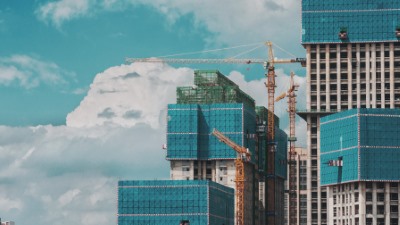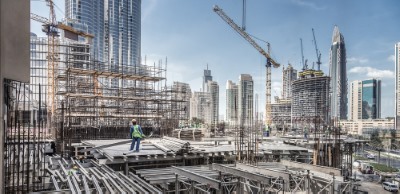List of Tables
Table 1: Mena top upcoming desalination projects ($m) and (cm/d)
Table 2: IWP projects and prices in the GCC
Table 3: Top Mena water and wastewater projects pipeline ranked by value ($m)
Table 4: Algeria water sector key facts
Table 5: List of completed IWPPs in Algeria
Table 6: Water supply for urban population facts
Table 7: Algeria safe drinking water facts (%)
Table 8: Algeria population growth by province, 2008−2020
Table 9: Average daily water endowment for every province in Algeria
Table 10: Surface water by water shade in Algeria
Table 11: Details of dams installed in Algeria
Table 12: Water desalination station in operation
Table 13: List of completed desalination projects in Algeria
Table 14: Future desalination projects in Algeria
Table 15: ONA key facts as of February 2018
Table 16: Wastewater plants in Algeria
Table 17: Wastewater treatment projects in Algeria
Table 18: Bahrain water sector key facts
Table 19: Water storage capacity in Bahrain, 2014−2018
Table 20: Total Water Production Capacity in Bahrain, 2018
Table 21: Desalination plants in operation in Bahrain
Table 22: Annual Production of Desalinated Water & Abstraction of Ground Water, 2014−2018
Table 23: Bahrain upcoming private water & desalination projects by value
Table 24: Bahrain upcoming water transmission projects by value
Table 25: Wastewater discharge from treatment plants in Bahrain
Table 26: Wastewater discharge in Bahrain by company
Table 27: Bahrain upcoming wastewater treatment projects by value
Table 28: Leading wastewater sector contractors in Bahrain
Table 29: Egypt water sector key facts
Table 30: Nile basin Treaties and Agreements
Table 31: Drinking Water Statistics, 2015−2016
Table 32: Capacity of major desalination plants in Egypt, cubic metres/day
Table 33: SCZone potable and municipal water supplies (cm/d)
Table 34: Desalination projects underway in Egypt
Table 35: Upcoming desalination projects in Egypt
Table 36: Types of cultivated plants using treated wastewater
Table 37: Water and Wastewater Sector Measurement Index in 2030 Vision
Table 38: Major wastewater treatment projects underway in Egypt
Table 39: Upcoming wastewater treatment projects in Egypt
Table 40: Iran water sector key facts
Table 41: List of IWPPs in Iran
Table 42: Iran water & desalination projects under construction
Table 43: List of completed desalination projects in Iran as of December 2020
Table 44: Iran wastewater treatment projects under construction
Table 45: Iran wastewater treatment projects in pre-execution
Table 46: Iran leading wastewater contractors
Table 47: Iraq water sector key facts
Table 48: Total water supply and demand for different purposes in southern provinces of Iraq
Table 49: Historical and future water demands in Iraq (billion cubic metres/year)
Table 50: Population and Potable Water Demand for different water shares
Table 51: Domestic water supply and demands
Table 54: Industrial water demand in Dhi Qar Province of Iraq
Table 55: Industrial water demand in Maysan Province of Iraq
Table 56: Agricultural production and water demand for irrigation in Al Basrah and Al Muthanna p
Table 57: Agricultural production and water demand for irrigation in Dhi Qar and Maysan
Table 58: Installed hydropower capacity in Iraq
Table 59: Storage Capacity of different Water Control Structures in Iraq
Table 60: The number and output of large and small plants in the provinces of Iraq
Table 61: Sewage treatment plants in Iraq governorates
Table 62: Pollution concentration for treatment plants in Iraq (mg/l)
Table 63: Iraq ongoing wastewater treatment projects by value*
Table 64: Iraq upcoming water treatment projects by value*
Table 65: Top contractors involved in Iraq’s wastewater treatment plant and associated projects ($m)
Table 66: Jordan water sector key facts
Table 67: Water uses and resources (Million Cubic Metres), 2017
Table 68: Water use by sector (Million Cubic Metres), 2008−2017
Table 69: Drinking Water Supply and Non-Revenue Water (NRW), 2007−2017
Table 70: Water provision (in million cubic metres) and NRW (per cent), 2016
Table 71: Additional water resources for remote areas
Table 72: Storage capacity and water storage of dams, 2018
Table 73: Number of Water and Wastewater Subscribers in Jordan, 2007−2017
Table 74: Water resources for all uses, 2008−2017 (million cubic metres)
Table 75: Total water resources in the Kingdom, 2018
Table 76: Water Supply (litre/capita/day), 2007−2017
Table 77: Use of ground water resources in Jordan (million cubic metres), 2017
Table 78: Identified Hot Spots in Jordan for the year 2019
Table 79: Distribution of surface water over water basins in the kingdom, 2017−2018
Table 80: List of completed desalination projects in Jordan
Table 81: Connection rates to the wastewater network by governorate, 2016
Table 82: Treated Wastewater Volumes (million cubic metres), 2007−2017
Table 83: Treated wastewater plants, 2016−2025
Table 84: Jordan wastewater treatment projects under execution*
Table 85: List of upcoming wastewater treatment projects in Jordan by value
Table 86: Kuwait water sector key facts
Table 87: Desalination plants operating in Kuwait
Table 88: Kuwait upcoming water desalination projects by value ($m) and capacity (cm/d)
Table 89: Kuwait wastewater sector key facts
Table 90: Wastewater treatment plants in Kuwait, 2020
Table 91: Future wastewater treatment projects
Table 92: The five major pumping stations
Table 93: Kuwait’s wastewater treatment projects planned and underway ($m)
Table 94: Top contractors involved in wastewater treatment plant and associated projects ($m)
Table 95: Lebanon water sector key facts
Table 96: Estimated water deficit in Lebanon (million cubic metres), 2015−2035
Table 97: Capital expenditure requirement in the water sector, 2011−2020
Table 98: Reasons for domestic water demand in urban and rural areas
Table 99: Lebanon water supply key facts
Table 100: Lebanon water transmission projects under construction
Table 101: Lebanon upcoming water transmission projects by value
Table 102: Lebanon major wastewater treatment projects under construction
Table 103: Lebanon upcoming wastewater treatment projects by value
Table 104: Morocco water sector key facts
Table 105: Morocco water supply key facts
Table 106: Morocco water & desalination projects under construction
Table 107: Morocco upcoming water & desalination projects by value
Table 108: Wastewater inflow characteristic in Morocco
Table 109: Key operators in Morocco’s Wastewater System Management
Table 110: Amount of Sludge produced in Morocco (in million tonnes/year), 2016−2020
Table 111: Reused treated wastewater by river basin by 2030 (million cubic metres/year)
Table 112: Wastewater in Morocco (mcm/year), 2016
Table 113: Wastewater reuse potential in Morocco (mcm/year)
Table 114: Morocco Wastewater treatment projects under construction
Table 115: Morocco upcoming Wastewater treatment projects by value
Table 116: Oman water sector key facts
Table 117: Main wadis and surface run-off*
Table 118: Oman upcoming water & desalination projects by value
Table 119: Operating wastewater treatment plants in Oman
Table 120: Oman upcoming wastewater treatment projects by value
Table 121: Oman wastewater treatment projects under execution by value
Table 122: Qatar water sector key facts
Table 123: Average per capita water consumption (cubic metres/year), 2010−2018
Table 124: Selected Kahramaa water supply contracts, 2006−2019
Table 125: Water Security Mega Reservoirs programme packages
Table 126: Qatar mega reservoir sites
Table 127: Total water storage by Type (MIG), 2014−2018
Table 128: Water Security Mega Reservoirs Programme – main contract awards
Table 129: Qatar’s desalination projects in operation, 2020
Table 130: Qatar major water transmission projects under construction
Table 131: Qatar wastewater sector key facts
Table 132: Wastewater at Sewage Plants in Qatar, 2011−2017
Table 133: Idris schedule
Table 134: Idris packaging strategy
Table 135: Idris packages status and awards
Table 136: Ashghal’s non-treatment infrastructure
Table 137: Qatar’s existing treatment capacity
Table 138: The Doha North contracts
Table 139: Ashghal wastewater projects by award year, 2010−2020
Table 140: Operating wastewater treatment plants in Qatar
Table 141: Treated and untreated urban sewage effluent usage
Table 142: Wastewater treatment projects underway in Qatar
Table 143: Upcoming wastewater treatment projects in Qatar
Table 144: Saudi Arabia water sector key facts
Table 145: Existing IWPPs
Table 146: Planned IWPs
Table 147: Saudi Arabia, total water demand (million cubic meters/year)
Table 148: Saudi Arabia, New SWPC desalination projects
Table 149: Major desalination plants operated by SWCC and other organisations
Table 150: Major SWCC desalination plants under construction
Table 151: Future projects
Table 152: Saudi Arabia, desalination projects in the pre-execution stage ($m)
Table 153: Planned SWCC transmission pipelines
Table 154: Planned ISTPs
Table 155: Cities under NWC’s mandate
Table 156: Planned O&M clusters
Table 157: Existing and planned large-scale STPs
Table 158: Existing and projected wastewater flow in Saudi Arabia by region
Table 159: Existing and projected wastewater flow in Saudi Arabia by city
Table 160: Wastewater treatment standards in Saudi Arabia
Table 161: TSE contracts*
Table 162: TSE MoUs
Table 163: NWC estimated capital spending programme, 2013−2017
Table 164: Saudi Arabia, major wastewater projects in the pre-execution stage ($m)
Table 165: UAE water sector key facts
Table 166: Dubai land used for agriculture (hectares)
Table 167: Recent underway and planned desalination awards by Fewa, 2018−2021
Table 168: UAE upcoming private water desalination projects by value, 2022
Table 169: UAE upcoming water desalination projects by value
Table 170: Leading contractors in the UAE water desalination sector, 2020
Table 171: Dubai volume of wastewater discharge (m3) by source, 2019
Table 172: Design hydraulic flow, actual hydraulic flow (collected wastewater), and volume of produced treated wastewater by emirate, 2017−2019 (m3)
Table 173: Abu Dhabi, quantity of wastewater inflow by region (million cubic metres)
Table 174: Abu Dhabi, quantity of treated wastewater by region (million cubic metres)
Table 175: Abu Dhabi, quantity of treated wastewater reuse by region (million cubic metres)
Table 176: Abu Dhabi, Conventional Wastewater Treatment Plants Capacity by Region (mcm)
Table 177: Abu Dhabi, Non-Conventional Wastewater Treatment Plants Capacity by Region (mcm)
Table 178: Mean annual concentration of main pollutants in wastewater before and after treatment pollutant – 2018
Table 179: Abu Dhabi existing sewage treatment plants in operation
Table 180: ADSSC’s capital spending programme 2015−2019 (AED ‘000)
Table 181: ADSSC capital spending programme (AED ‘000), 2016−2018
Table 182: Capital spending on treatment capacity (AED ‘000), 2016−2017
Table 183: Regulatory compliance spending requirements (AED ‘000), 2016−2017
Table 184: UAE upcoming wastewater treatment projects by value ($m)
Table 185: Leading contractors in the UAE wastewater treatment sector, 2020
![]()










